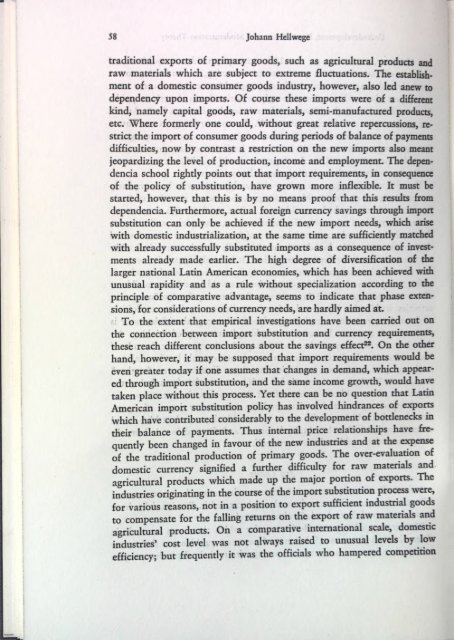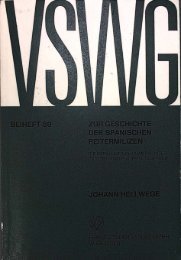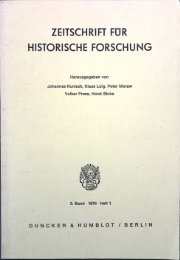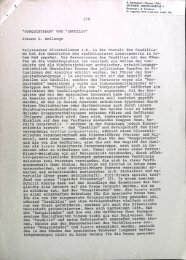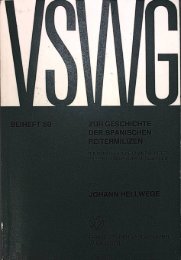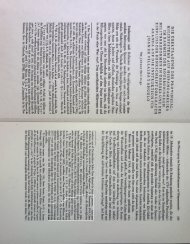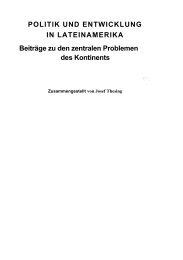9_Law and State_Volume 17
Create successful ePaper yourself
Turn your PDF publications into a flip-book with our unique Google optimized e-Paper software.
58 Johann Hellwege<br />
traditional exports of primary goods, such as agricultural products <strong>and</strong><br />
raw materials which are subject to extreme fluctuations. The establishment<br />
of a domestic consumer goods industry, however, also led anew to<br />
dependency upon imports. Of course these imports were of a different<br />
kind, namely capital goods, raw materials, semi-manufactured products,<br />
etc. Where formerly one could, without great relative repercussions, restrict<br />
the import of consumer goods during periods of balance of payments<br />
difficulties, now by contrast a restriction on the new imports also meant<br />
jeopardizing the level of production, income <strong>and</strong> employment. The dependencia<br />
school rightly points out that import requirements, in consequence<br />
of the policy of substitution, have grown more inflexible. It must be<br />
started, however, that this is by no means proof that this results from<br />
dependencia. Furthermore, actual foreign currency savings through import<br />
substitution can only be achieved if the new import needs, which arise<br />
with domestic industrialization, at the same time are sufficiently matched<br />
with already successfully substituted imports as a consequence of investments<br />
already made earlier. The high degree of diversification of the<br />
larger national Latin American economies, which has been achieved with<br />
unusual rapidity <strong>and</strong> as a rule without specialization according to the<br />
principle of comparative advantage, seems to indicate that phase extensions,<br />
for considerations of currency needs, are hardly aimed at.<br />
To the extent that empirical investigations have been carried out on<br />
the connection between import substitution <strong>and</strong> currency requirements,<br />
these reach different conclusions about the savings effect22. On the other<br />
h<strong>and</strong>, however, it may be supposed that import requirements would be<br />
even greater today if one assumes that changes in dem<strong>and</strong>, which appeared<br />
through import substitution, <strong>and</strong> the same income growth, would have<br />
taken place without this process. Yet there can be no question that Latin<br />
American import substitution policy has involved hindrances of exports<br />
which have contributed considerably to the development of bottlenecks in<br />
their balance of payments. Thus internal price relationships have frequently<br />
been changed in favour of the new industries <strong>and</strong> at the expense<br />
of the traditional production of primary goods. The over-evaluation of<br />
domestic currency signified a further difficulty for raw materials <strong>and</strong><br />
agricultural products which made up the major portion of exports. The<br />
industries originating in the course of the import substitution process were,<br />
for various reasons, not in a position to export sufficient industrial goods<br />
to compensate for the falling returns on the export of raw materials <strong>and</strong><br />
agricultural products. On a comparative international scale, domestic<br />
industries’ cost level was not always raised to unusual levels by low<br />
efficiency; but frequently it was the officials who hampered competition


